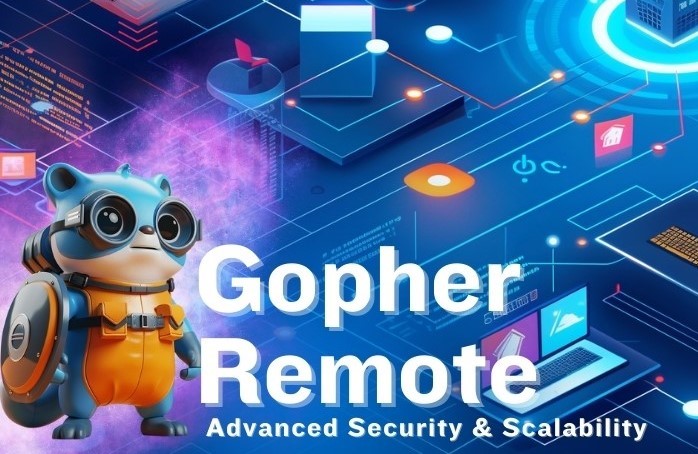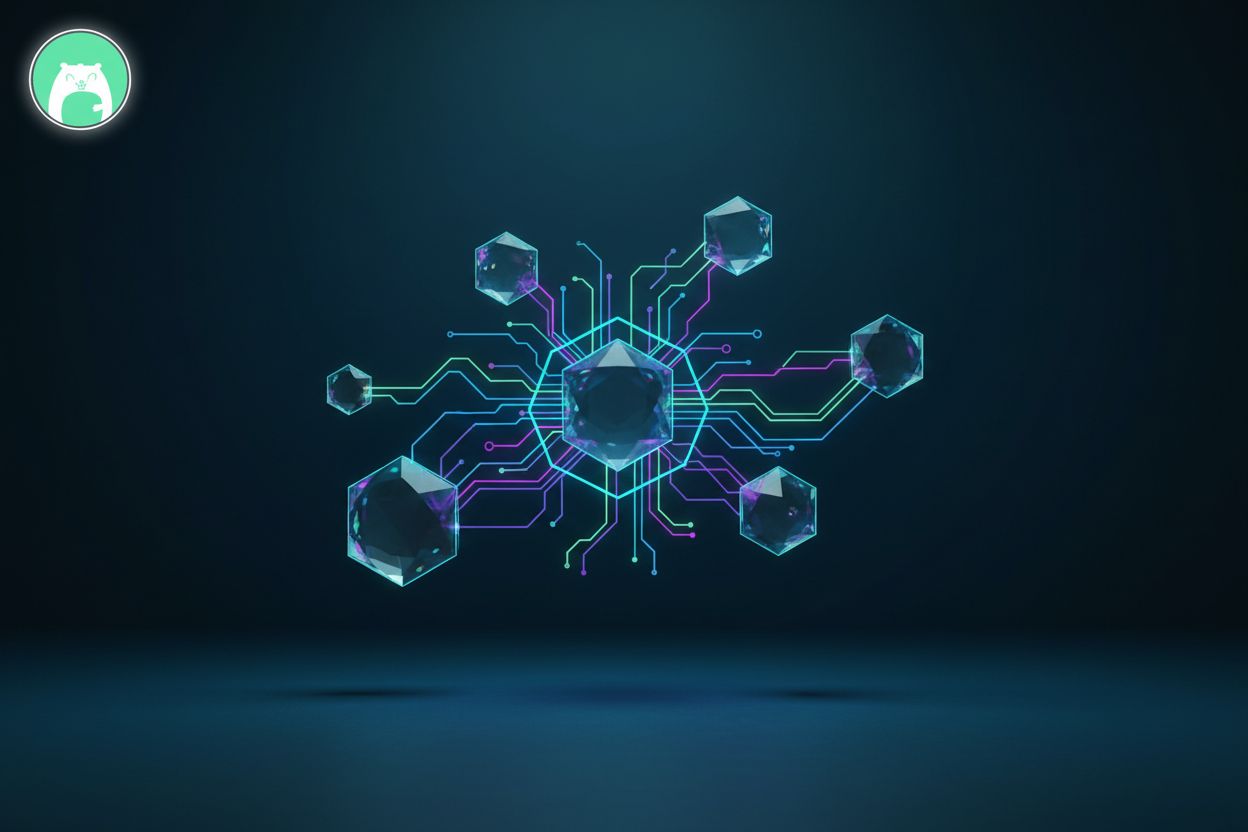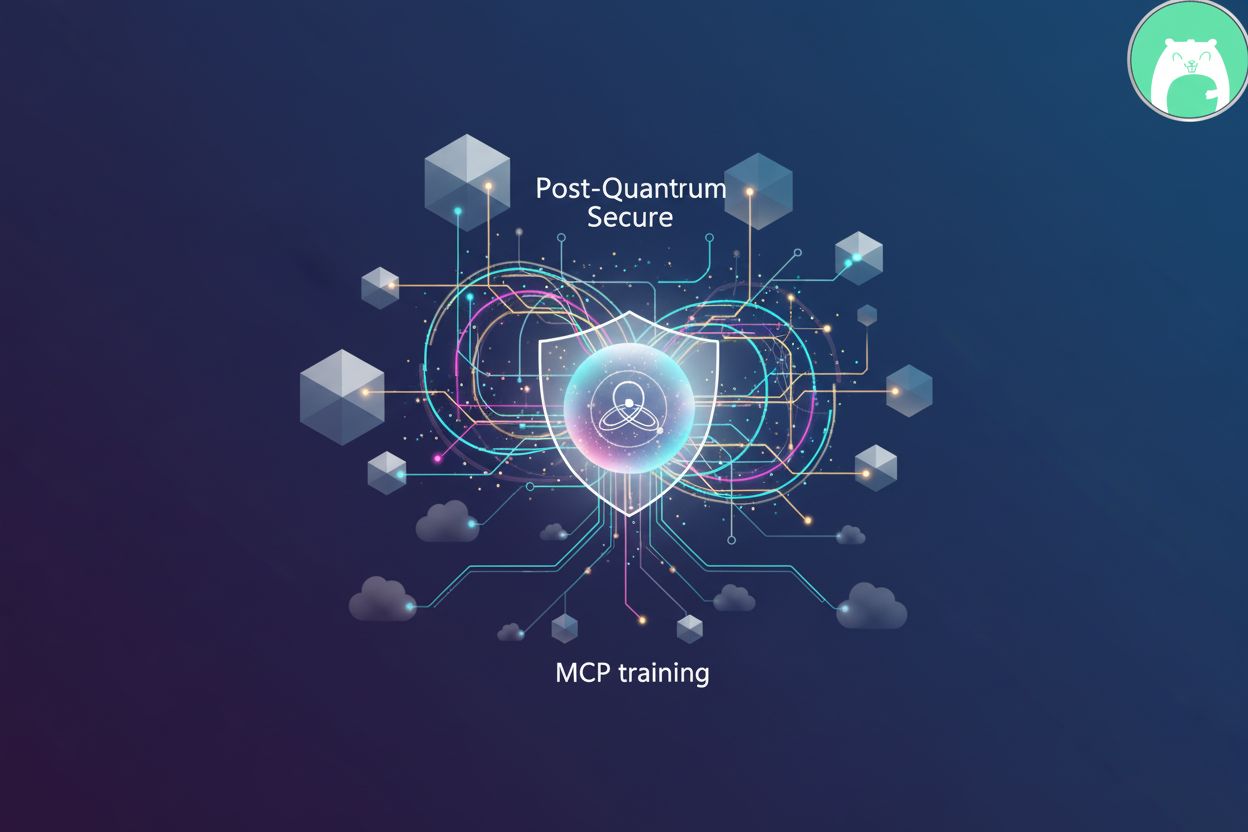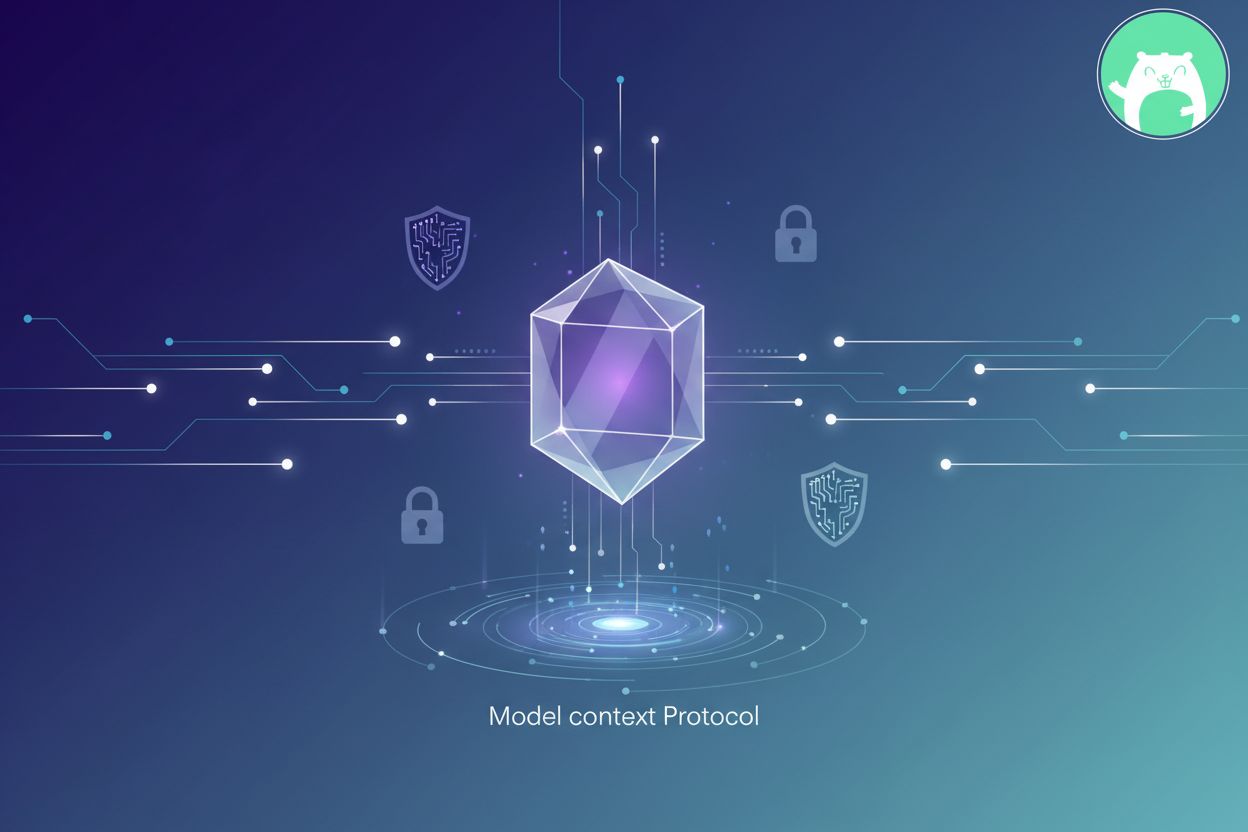Gopher Remote: The Ultimate Solution for Secure and Seamless Remote Access

TL;DR
Summary
In today’s remote and hybrid work environment, organizations face increasing challenges in securing remote access to their networks and applications. Traditional remote access solutions like VPNs and MPLS are struggling to meet the demands of a dynamic workforce, multi-cloud environments, and modern security threats. Gopher Remote introduces a next-generation approach to remote access by combining Zero Trust Network Access (ZTNA), end-to-end encryption, and advanced application awareness to provide unparalleled security and performance. This blog explores how Gopher Remote overcomes the limitations of traditional remote access methods and delivers immense customer value. Another good read is Why Security is Essential in the Remote Access Shift: Key Insights.
Gopher Remote: Secure Remote Access to Test, Staging and Production Servers Using Gopher Private IP, Peer-to-Peer Networking and Micro-segmentation
What is Remote Access?
Remote access allows users to securely connect to enterprise resources, such as internal applications, data, and systems, from remote locations. In the era of cloud, hybrid environments, and remote work, having a secure and flexible remote access solution is critical. However, traditional remote access technologies often introduce vulnerabilities, increase latency, and complicate network management.
Why Do You Need Secure Remote Access?
As enterprises adopt cloud-based workloads, hybrid environments, and support an increasingly remote workforce, they need a scalable, secure, and high-performance remote access solution. With the rise of remote work and digital transformation, security concerns such as unauthorized access, data breaches, and performance issues have increased dramatically. A robust remote access solution ensures that users can securely access corporate resources from anywhere without compromising security or performance.
Traditional Remote Access Methods
Most organizations rely on legacy methods such as VPNs, MPLS, or SD-WAN to provide remote access. While effective for basic connectivity, these solutions are often complex, costly, and lack modern security features like Zero Trust Network Access (ZTNA) and end-to-end encryption.
Now let’s explore how Gopher Remote overcomes these challenges and enhances security, performance, and scalability.
Traditional Approach vs. Gopher Remote: Key Differences
1. Insufficient Authentication and Authorization vs. Continuous Authentication and Authorization
Traditional Approach: Many legacy remote access solutions rely on basic username-password combinations, making them susceptible to attacks like credential theft and brute-force attempts. Multi-factor authentication (MFA) is often absent or poorly implemented.
Gopher Remote: Gopher Remote eliminates the risks of traditional username-password schemes by integrating with modern identity providers. It leverages multi-factor authentication (MFA) and context-aware authentication, ensuring continuous verification of user identities to prevent unauthorized access.
Customer Value: By ensuring continuous authentication and authorization, Gopher Remote significantly reduces the risk of breaches and provides robust protection against unauthorized access.
2. Inadequate Encryption vs. Quantum-Resistant and End-to-End Encryption
Traditional Approach: Many remote access systems use weak or outdated encryption protocols, leaving sensitive data vulnerable to interception.
Gopher Remote: Gopher Remote offers quantum-resistant, end-to-end encryption, ensuring that all communication remains secure from potential eavesdropping or man-in-the-middle attacks.
Customer Value: Gopher Remote’s encryption protocols protect sensitive data at all times, even against future quantum computing threats.
3. Limited Visibility and Monitoring vs. Layer-¾ Observability and Layer-7 Traffic Inspection
Traditional Approach: Remote access solutions often lack comprehensive logging and monitoring, leading to security blind spots and delayed response times in case of incidents.
Gopher Remote: With layer-¾ traffic observability and layer-7 traffic inspection, Gopher Remote provides real-time monitoring, enabling quick identification and response to potential threats.
Customer Value: Complete traffic observability and anomaly detection ensure that security teams have the insights they need to protect the network proactively.
4. Network Performance and Latency vs. High Performance and Low Latency
Traditional Approach: VPNs and proxies introduce high latency, especially for globally distributed users, negatively impacting the performance of real-time applications.
Gopher Remote: Gopher Remote leverages peer-to-peer connections to provide low-latency and high-performance access, ideal for applications such as VoIP, video conferencing, and other real-time services.
Customer Value: Enterprises benefit from optimized network performance and minimal latency, ensuring that remote users have a seamless experience.
5. Inconsistent Security Policies Across Devices vs. Unified Policy Control
Traditional Approach: Different security policies across devices lead to vulnerabilities, making endpoint protection difficult to manage.
Gopher Remote: Gopher Remote ensures unified security policies across all endpoints and resources, with just-in-time policy checks for every access request.
Customer Value: This unified approach ensures consistent security across all devices, reducing the likelihood of device-specific vulnerabilities.
6. Lack of Granular Access Control vs. Granular Policy Control
Traditional Approach: Traditional remote access systems often provide broad access, leaving sensitive resources exposed to unauthorized users.
Gopher Remote: Gopher Remote enforces granular policy control with Zero Trust Network Access (ZTNA), allowing for attribute-based access control that limits access to only the resources necessary for each user.
Customer Value: By enforcing least privilege access, Gopher Remote minimizes the attack surface and ensures that sensitive data remains protected.
7. Securing Endpoint Devices vs. Context-Aware Endpoint Authentication
Traditional Approach: Endpoint security is often overlooked, increasing the risk of malware or ransomware infections on remote devices.
Gopher Remote: Gopher Remote enforces context-aware authentication that factors in environmental elements like device IP, location, and security posture before allowing access.
Customer Value: Ensures that only trusted devices can access enterprise resources, reducing the risk of compromised endpoints.
8. Scalability Issues vs. Horizontal Scaling
Traditional Approach: Traditional VPNs struggle to scale dynamically to accommodate an increasing number of remote users, leading to performance bottlenecks.
Gopher Remote: Gopher Remote offers horizontal scaling with mesh networking, allowing for all-to-all connectivity without the need for central proxies or VPN concentrators.
Customer Value: Gopher Remote scales seamlessly to meet growing remote access demands, ensuring reliable access for all users.
9. Network Segmentation and Isolation vs. On-Demand Micro-Segmentation
Traditional Approach: Without network segmentation, remote access often exposes internal systems to lateral movement attacks.
Gopher Remote: Gopher Remote enables on-demand micro-segmentation, isolating critical assets and preventing lateral movement in case of a breach.
Customer Value: Micro-segmentation significantly reduces the risk of data breaches, ensuring that only authorized users can access sensitive resources.
10. Vulnerabilities in Remote Access Software vs. Hardened and Code-Signed
Traditional Approach: Remote access software itself can be vulnerable to exploits, especially if not properly maintained or updated.
Gopher Remote: Gopher Remote ensures that all software is code-signed and hardened, and it continuously verifies the integrity of the software.
Customer Value: Protects against zero-day vulnerabilities and malicious code injection, ensuring the highest level of software security.
11. Bypassing Security Controls vs. Gopher IP Filter Enforcement
Traditional Approach: Remote users can bypass corporate security controls using unauthorized VPNs or proxies.
Gopher Remote: Gopher Remote enforces private IP filters, ensuring that only traffic from gopher-authorized IPs is allowed, neutralizing the use of unauthorized proxies.
Customer Value: Ensures that security policies cannot be bypassed, keeping all traffic secure and within defined parameters.
12. Lack of Application Awareness vs. Full Application Awareness
Traditional Approach: Traditional remote access solutions often lack insight into the types of applications being accessed.
Gopher Remote: With full application awareness, Gopher Remote inspects, routes, and secures traffic based on application-level data, ensuring optimal resource allocation and security.
Customer Value: Delivers intelligent traffic management and enhanced security for mission-critical applications.
13. DDoS and Man-in-the-Middle Attacks vs. DDoS Neutralization
Traditional Approach: Remote access networks are vulnerable to DDoS and man-in-the-middle attacks that disrupt services and compromise data integrity.
Gopher Remote: By using gopher private IPs, Gopher Remote neutralizes DDoS attacks by making the network unreachable to unauthorized users.
Customer Value: Reduces exposure to DDoS attacks, ensuring continuous availability and secure connections.
14. Insufficient Integration with Cloud and Hybrid Environments vs. Cloud-Native Integration
Traditional Approach: Traditional VPNs and remote access solutions are often difficult to integrate with modern cloud and hybrid environments.
Gopher Remote: Gopher Remote is environment-agnostic, allowing for seamless connectivity across cloud, on-premises, and hybrid environments.
Customer Value: Simplifies network integration, ensuring a consistent and secure experience across all environments.
15. Regulatory and Compliance Issues vs. Simplified Compliance
Traditional Approach: Ensuring compliance with industry regulations is challenging with traditional remote access solutions.
Gopher Remote: Gopher Remote is SOC2 compliant and supports comprehensive auditing, encryption, and micro-segmentation to meet the requirements of GDPR, HIPAA, and other frameworks.
Customer Value: Helps enterprises meet regulatory compliance effortlessly, avoiding fines and penalties.
Inheriting Gopher’s Out-of-the-Box Security From Layer-3/4 to Layer-7
1. Enforcing Tunnel Match at Layer-3/4
Gopher ensures that all network connections are validated by enforcing tunnel matches at the network (Layer-3) and transport (Layer-4) layers. This strict enforcement means that only legitimate tunnels, authenticated by Gopher, can be established, ensuring that no unauthorized traffic can pass through.
Customer Value: This minimizes the risk of unauthorized access or data breaches by ensuring that only secure, authenticated tunnels are allowed, providing stronger security than legacy proxies that lack this enforcement.
2. Enforcing Policy Match at Layer-3/4
Gopher enforces policy compliance at both the network (Layer-3) and transport (Layer-4) layers, ensuring that all traffic adheres to predefined security rules. Traffic that does not meet these policies is immediately blocked, preventing unauthorized data flow.
Customer Value: This ensures strict adherence to organizational policies, mitigating the risk of non-compliant traffic entering or leaving the network, a capability that is often missing in legacy proxies, leading to security gaps.
3. Enforcing Network Segment Match at Layer-3/4
Gopher enables micro-segmentation at the network and transport layers, ensuring that each network segment is securely isolated. This approach prevents lateral movement within the network by restricting access to isolated segments based on user and application roles.
Customer Value: By isolating network segments, Gopher protects against lateral data breaches, ensuring that even if one segment is compromised, the threat cannot easily spread. Legacy proxies often lack this isolation, making them more vulnerable to breaches.
4. Traffic Observability at Layer-3/4
Gopher provides full observability of all network traffic at Layer-3 and Layer-4. It captures, monitors, and analyzes traffic patterns in real-time, allowing administrators to detect anomalies or potential threats quickly.
Customer Value: Real-time traffic visibility ensures that potential issues can be identified and addressed promptly, improving overall network security and performance, especially compared to legacy proxies that leave blind spots in traffic monitoring.
5. Contextual Factors Match at Layer-7
At the application layer (Layer-7), Gopher enforces contextual factors such as user identity, device status, and location to determine whether access should be granted. By evaluating these context-aware factors, Gopher ensures that access is not only based on credentials but also on the current security context of the request.
Customer Value: This adds an extra layer of security by ensuring that access is granted only when all contextual factors align, greatly reducing the risk of unauthorized endpoints gaining access. Legacy proxies typically do not offer this level of context-aware authentication.
6. Policy Match at Layer-7
Gopher enforces policy rules at the application layer, ensuring that detailed security policies are followed before granting access to sensitive resources. These policies can be tailored to user roles, application types, or specific data sensitivity levels.
Customer Value: Granular policy enforcement at Layer-7 ensures that only authorized users can access sensitive resources, significantly improving data protection and compliance compared to legacy proxies that lack this level of control.
7. Traffic Inspection at Layer-7
Gopher inspects application-level traffic at Layer-7, including HTTP, gRPC, and WebSocket traffic. It performs deep packet analysis to identify potential threats, block malicious activity, and ensure compliance with security policies.
Customer Value: This deep inspection capability allows Gopher to detect and block modern, sophisticated attacks, providing comprehensive protection. Legacy proxies often lack this capability, leaving them vulnerable to advanced threats.
8. Enabling Service Mesh at Layer-7
Gopher supports a service mesh architecture at Layer-7, which enables secure and dynamic service-to-service communication. This functionality improves both application performance and security by controlling the interactions between micro-services.
Customer Value: With Gopher’s service mesh, organizations can achieve secure, efficient communication between microservices, which is essential for cloud-native applications. This capability is often absent in legacy proxies, which struggle with service-to-service communication.
9. Quantum-Resistant End-to-End Encryption
Gopher offers quantum-resistant encryption, ensuring that communications are protected from future quantum computing threats. This encryption is based on advanced cryptographic algorithms that can withstand attempts to break encryption using quantum technology.
Customer Value: Future-proofing network security by using quantum-resistant encryption protects against evolving threats and ensures data integrity and confidentiality, which legacy proxies are not equipped to handle.
10. Pluggable Framework to Extend Data Plane
Gopher provides a pluggable framework that allows organizations to extend the data plane with new features and capabilities without replacing the entire system. This ensures that the security infrastructure can evolve alongside business needs.
Customer Value: The pluggable framework allows for scalability and adaptability, ensuring that security measures can be updated and extended as needed without significant infrastructure changes, offering a future-proof solution compared to the rigid structures of legacy proxies.
11. Disabling Inbound Traffic to Prevent External Threats
Gopher allows organizations to disable inbound traffic entirely, restricting communication to authorized Gopher tunnels. This approach drastically reduces the attack surface by preventing unauthorized external connections from being established.
Customer Value: By disabling inbound traffic and allowing only trusted Gopher tunnels to communicate, organizations gain an additional layer of protection against external threats, reducing exposure to potential attacks that legacy proxies cannot mitigate as effectively.
Conclusion
Gopher Remote provides a modern, scalable, and secure remote access solution that overcomes the limitations of traditional VPNs, MPLS, and other legacy approaches. By leveraging Zero Trust Network Access (ZTNA), peer-to-peer networking, and mesh connectivity, Gopher Remote ensures that enterprises can securely connect users, devices, and applications across hybrid and cloud environments.
Final Thoughts and Recommendation
In an era of increasing security risks and growing remote workforces, organizations need remote access solutions that offer scalability, advanced security, and seamless performance. Gopher Remote provides all these benefits and more. We highly recommend Gopher Remote as a foundational tool for any organization seeking to modernize its remote access capabilities while ensuring the highest levels of security and performance.





